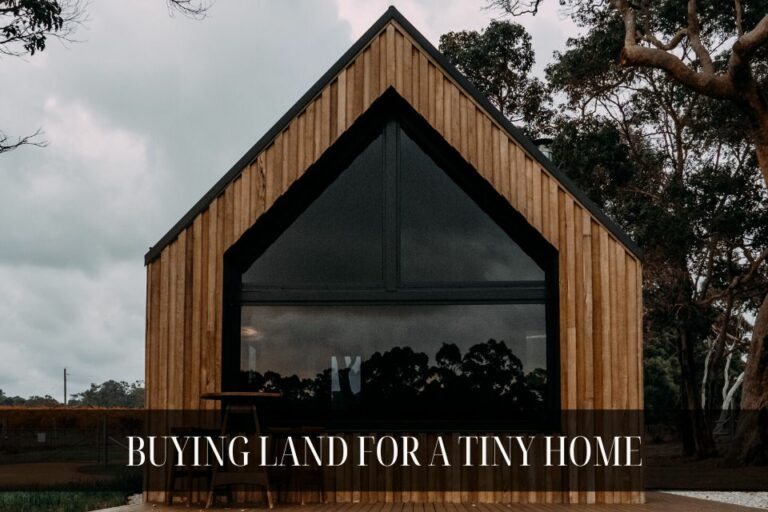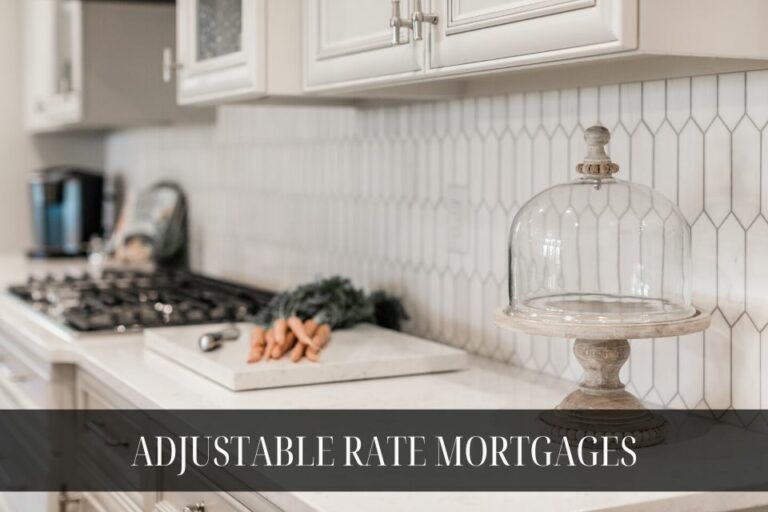Tips for Buying Land for a Tiny or Prefab Home

Prefabricated homes have become very popular in recent years as more
and more people look for creative ways to build their home environment.
These homes can take the form of a tiny house, manufactured home, or
Airstream. The demand for vacant land has increased exponentially over
the past few years.
Yet, finding the right piece of property involves more than remote driveways
and beautiful views. Not all land can accommodate full-time, or even
part-time, living. There are important considerations to buying the right
property and ensure a healthy, practical lifestyle.
· Zoning and Setback Requirements – Not all vacant land can be
developed. Even the placement of semi-permanent structures, such as a
trailer, may not be allowed. The first step in a land purchase is to check the
zoning laws governing the property. Then, after determining any placement
restrictions, check the setback rules and ensure you have the space you
want for the home.
· Utilities – In a rural setting, finding available power and internet
coverage may be a challenge. Depending on how far “off the grid” you plan
to live will determine the type of power needed to manage your needs.
· Sewer, Septic, Water – Consider the option of city sewer and water.
If the property is in a remote rural area, then these needs will need to be
supplied by septic systems and wells. Do not assume the availability of
these essential services.
Finally, how will you access the home site. The hilltop view might be
spectacular, but if it’s difficult to access year-round, it may not be practical
for full-time living.
Small Changes That Make Any Room Cozier

In previous decades, a warm, cozy home required dark colors and heavy
materials. One can envision sitting in front of a roaring fire in a dark room
filled with pillows and wood paneling. Contemporary homes are brighter,
with clean lines and light colors and textures. The challenge is how to
create an inviting, cozy space that everyone wants during the cooler
months. Fortunately, it’s not necessary to choose between the
claustrophobic styles of the past and warm inviting rooms.
The first tip is lighting. Soften the lighting and consider swapping cold,
metal fixtures for ones using natural materials, such as willow or linen.
Next, layer blankets throughout the home. Imagine the luxury of falling into
a soft bed with layers of cozy white blankets and quilts. Neutral colors gain
dimension by contrasting subtle hues of the same palate.
We change our lifestyle during colder months as well. Lifestyle shifts from
our outdoor spaces to interior rooms. Create a warm beverage station to
invite guests and family members to relax and unwind. Add pillows to sitting
areas to build comfort in living rooms. Finally, add scent to the home.
Candlelight not only sets a relaxing mood but fills the space with soothing
smells of the season.
Cozy, inviting spaces do not have to mean dark colors and heavy materials.
Layering is the easiest way to create a softer, warmer room. Combine this
with a few seasonal candles and touches, and any room can be cozier this
weekend with only a few small changes.
How to Use Comps to Price Your Home Correctly

The most important aspect of listing your home for sales is the asking price.
Unlike many other items we purchase, home prices are based on what a
willing and able buyer would pay for the property. Sounds complicated,
right? This is why real estate agents bring comps ( short for comparable
properties) information with them to the discussion. Yet are you using the
right comps to successfully sell your home?
The idea is to gather information about comparable properties that have
sold recently that are similar to your own. The goal is to compare apples to
apples. In other words, the properties should be as close to the subject
home as possible. This includes things like:
· Location – how far is the property from yours.
· Size – square footage is an important aspect of value.
· Number of bedrooms/bathrooms – even if the square footage is
close, the number of bedrooms and bathrooms can have a large effect on
price.
· Style, view, street, yard – even the exact same floorplan can have
vastly different value based on the street it’s on or the view. Size of the yard
and privacy are also critical components of value.
· Amenities – private or community pools and other amenities can
affect value as well.
Your agent will bring recent sales for homes that compare to yours. As you
look through these listings, you can add or subtract values based on the
differences. This is the same process an appraiser will use to approve the
loan. While this is more of an art than a science, the right comps can help
you properly price your home for a smooth sale.
Get Rid of Unwelcome Critters

Most people have heard that annoying sound – a mouse running through
the wall or in the rafters of the garage. Often these problems can be solved
quickly by luring them out and plugging the openings they entered through.
But what if the unwanted animals are in your chimney? With the colder
weather, an evening by a warm fire sounds wonderful, but you may find
that a family of critters has moved in and needs to be evicted before using.
Animals love to nest in chimneys, especially when they are creating a safe
environment for raising young ones. Raccoons, squirrels, bats, birds all
love making nests in the quiet, dark recesses of the house, and an unused
chimney is perfect. Before lighting the first fire, you should check for
guests. When opening the damper, you may be surprised to find a small
animal drop into the fireplace, or at least their droppings.
At this point, some people think that smoking the unwanted critters out is
an easy course of action. However, if this typically just smokes out the
house and if the unwanted guests include babies, they may not be able to
move quickly and the smoke approach is simply cruel and ineffective. The
best course of action is to use patience and shine a bright light into the
space. This eliminates the cozy environment they crave and they will leave.
Once the animals are gone, there are a wide variety of guards and screens
which can prevent animals from coming back. Cold weather affects the
animal kingdom as much as the human one; a quick look up the chimney
can save a lot of smoke and hassle.
Are Adjustable-Rate Mortgages Making a Comeback?

Homebuyers have had a rough time lately. First, the frenzied housing
market stymied so many offers and caused frustration due to lack of
inventory. Now that the pace and prices are starting to drop, interest rates
have ticked up to alarming levels. While some buyers are postponing their
purchase, those still in the market are starting to consider more creative
financing, including an ARM (Adjustable-Rate Mortgage).
What is an ARM?
Unlike a 30-fixed mortgage, as the name suggests, the interest rate of an
ARM can change over the course of the loan. The interest rate is based on
an index, such as the one year T-Bill. Additionally, the timing of adjustment
is fixed in the loan documents, so the borrower knows how to plan for
changes. For example, a 5/1 ARM means that the initial interest rate is
fixed for the first five years and then can adjust once a year for the
remaining 25. Likewise, a 7/1 ARM has a fixed period of 7 years. There are
also built-in protections to ensure that the adjustments are reasonable.
These are limits to how high and adjustment (or reduction) can be
assessed at each point and an overall cap on the interest rate.
The advantage of an ARM is to allow more buying power to buyers by
starting with a lower interest rate than that available in a 30-year fixed loan.
This can be especially valuable for buyers who do not intend to keep the
home for 30 years; they can tailor the adjustments based on their planned
time to own the home.
The housing market is shifting. Homebuyers may not have the same
challenges as last year, but today’s market presents new issues. One tool
is an Adjustable-Rate Mortgage and with ever higher interest rates, this
mortgage product may be making a comeback.
Design Trends for 2023 – More is Everything

A common regret around taking down the holiday decorations is how bare
the home looks suddenly. Fortunately for anyone ready to upgrade their
design in 2023, new trends are offering more comfort and coziness than
we’ve seen lately.
For the past few years, home designers have created a blend of
minimalism and simplicity in their home styles. This style involves removing
anything from the space that is not necessary for function or lifestyle. The
common phrase, “does it spark joy,” is a new mantra for homeowners
hoping to eliminate clutter from their homes.
As the new year approaches, this mindset has been thrown out the window.
Maximalism is the new theme. Color and patterns, textures, and excess
have replaced the sleek lines and neutral colors of minimalist design. Home
décor trends now invite the consumer to play with bold colors and
contrasting patterns and shapes. Almost anything goes.
It’s important to note that this is not an invitation for clutter. A perusal of
home magazines and design books emphasizing the latest “boho” style,
clearly shows a method to the design. The furnishings are functional and
comfortable. Color palettes are curated for harmony and mood. While this
is a great time to experiment, to avoid creating a hodge-podge of design,
thought is more important than ever. 2023 is almost here and with it a fresh approach to décor. Forget the
minimalist style of the past and embrace maximalism; with all the print,
color, and excitement it brings to the home.
Can You Buy a Home with IRS Debt?

Owing money to the IRS is unsettling for anyone. It’s also very easy to find
oneself in that position. Many people are shocked to discover that they
inadvertently miscalculated the amount of taxes owed either at the end of
the year or from a previous year. There are also unexpected events that
can cause a tax event such as a windfall profit or inheritance.
Regardless of the cause, owing money to the IRS is no fun. If you are
considering a home purchase, you may be wondering how this will affect
your ability to do so.
If you owe back taxes to the IRS, most likely there is a tax lien. A tax lien is
a personal lien that is attached to the person and any property they own. A
tax lien takes priority over all other financial obligations, including a
mortgage. This puts the lender at greater risk since in the event of a
default, they would only be paid after the IRS lien was satisfied.
The good news is that although owing back taxes can make buying a home
more complicated, it does not prevent you from buying a home. First step is
to contact your lender and explain the situation. There are many reasons
people owe back taxes that do not make them a credit risk. You may be
able to either pay off the taxes or arrange a payment plan with the IRS that
will allow you to finance a new home. There are options, but being honest
with your lender is the first step so you understand your options.
Overall Market Update – 5 Realities for Sellers Now

Over the past few years, most of the US has been in a strong seller’s
market. Historically low interest rates coupled with rising incomes resulted
in buyers who were ready and able to buy a new home. It was a crazy time
when sellers needed to do little more than put a sign in the yard to attract
multiple offers.
However, the post-Covid housing market is quite different. The uncertainty
in the economy has slowed the pace and rising interest rates have caused
buyers to reconsider their purchase, and the amount they are willing to pay.
As a result, sellers must go back to the tried-and-true methods of selling a
home, debunking the myths of the past few years.
5 “New” Realities for Sellers
1. Price the Home Realistically –Now sellers must be more careful
and price the home realistically to avoid losing the precious early days of a
listing when buyer’s interest is highest.
2. Make Repairs – Buyers have more choices now and they will be
more careful about buying a home that needs a lot of work.
3. Consider Making Concessions – Buyers often ask for reasonable
concessions; sellers should weigh the offer before rejecting.
4. Staging is Back – Make sure the home is show-ready and sellers
may consider some simple staging to make the home more appealing to
buyers.
5. Be Prepared to Wait – The pace has slowed. In a “normal” market,
most homes take 30-45 days to enter escrow.
Finally, sellers should pay attention to their local market and determine the
right time to list. Balance has returned to the housing market. Sellers and
buyers must adjust their thinking back to the “old” concepts to be successful.


 Facebook
Facebook
 X
X
 Pinterest
Pinterest
 Copy Link
Copy Link

